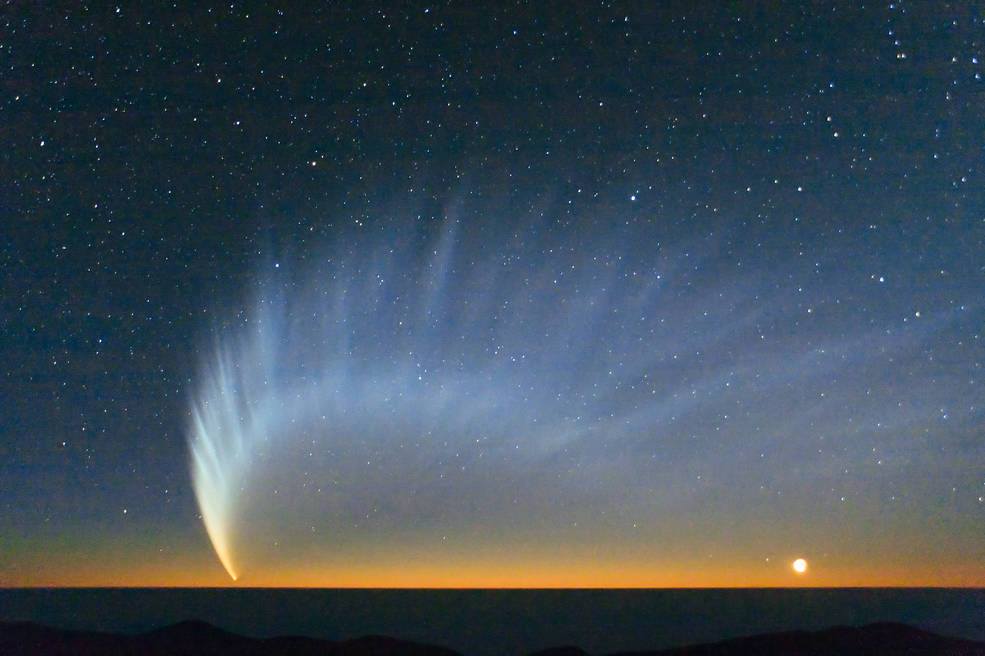Aside from being comets, they both offer valuable insight about how solar wind affects the dust tail—the long stream of dust following in the comet’s path. Scientists used a temporal map, which layers information from multiple images, to discover that variations of solar wind push the dust around like a ruffled feather—suggesting that the dust is electronically charged. This discovery sheds light on the processes that formed dust into asteroids, moons, and planets in the early days of our solar system.
Read more
